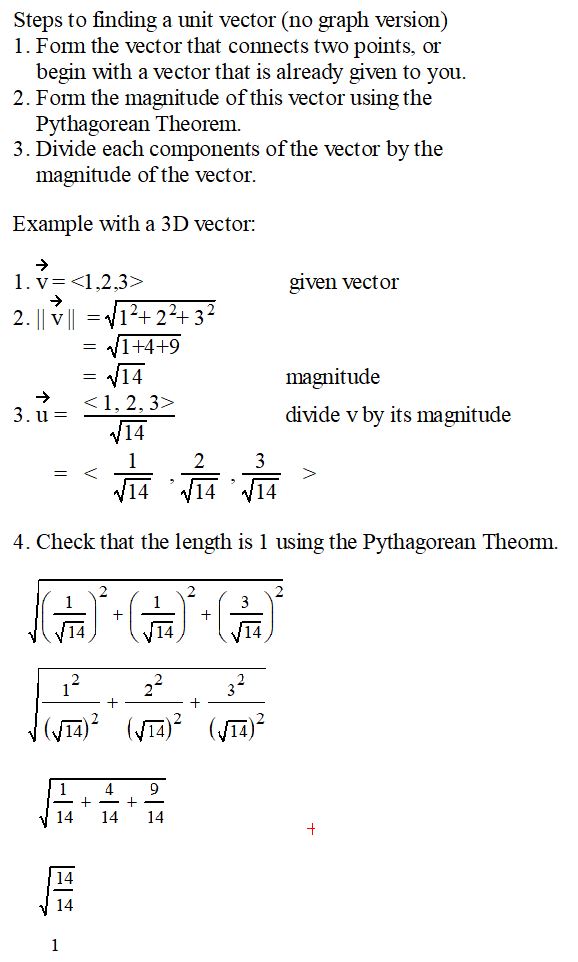A unit vector is a vector with a magnitude of 1, and it points in the same direction as the original vector. To find the unit vector in the direction of the given vector \( \mathbf{v} = \langle 1, 2, 3 \rangle \), we’ll follow these steps:
- Calculate the Magnitude of the Vector: The magnitude of a vector \( \mathbf{v} = \langle x, y, z \rangle \) is given by: \[ \|\mathbf{v}\| = \sqrt{x^2 + y^2 + z^2} \] For \( \mathbf{v} = \langle 1, 2, 3 \rangle \), the magnitude is: \[ \|\mathbf{v}\| = \sqrt{1^2 + 2^2 + 3^2} = \sqrt{1 + 4 + 9} = \sqrt{14} \]
- Divide the Vector by Its Magnitude: To find the unit vector, we’ll divide each component of the original vector by its magnitude: \[ \text{Unit vector} = \frac{\langle 1, 2, 3 \rangle}{\sqrt{14}} = \left\langle \frac{1}{\sqrt{14}}, \frac{2}{\sqrt{14}}, \frac{3}{\sqrt{14}} \right\rangle \]
So, the unit vector in the direction of \( \langle 1, 2, 3 \rangle \) is \( \left\langle \frac{1}{\sqrt{14}}, \frac{2}{\sqrt{14}}, \frac{3}{\sqrt{14}} \right\rangle \).
To check that the length of the unit vector is indeed 1, we’ll calculate its magnitude:
- Square Each Component: \[ \left(\frac{1}{\sqrt{14}}\right)^2 = \frac{1}{14}, \quad \left(\frac{2}{\sqrt{14}}\right)^2 = \frac{4}{14}, \quad \left(\frac{3}{\sqrt{14}}\right)^2 = \frac{9}{14} \]
- Sum the Squares of the Components: \[ \frac{1}{14} + \frac{4}{14} + \frac{9}{14} = \frac{1 + 4 + 9}{14} = \frac{14}{14} \]
- Take the Square Root of the Sum: \[ \sqrt{\frac{14}{14}} = \sqrt{1} = 1 \]
So, the magnitude of the unit vector \( \left\langle \frac{1}{\sqrt{14}}, \frac{2}{\sqrt{14}}, \frac{3}{\sqrt{14}} \right\rangle \) is indeed 1, confirming that it is a unit vector.

